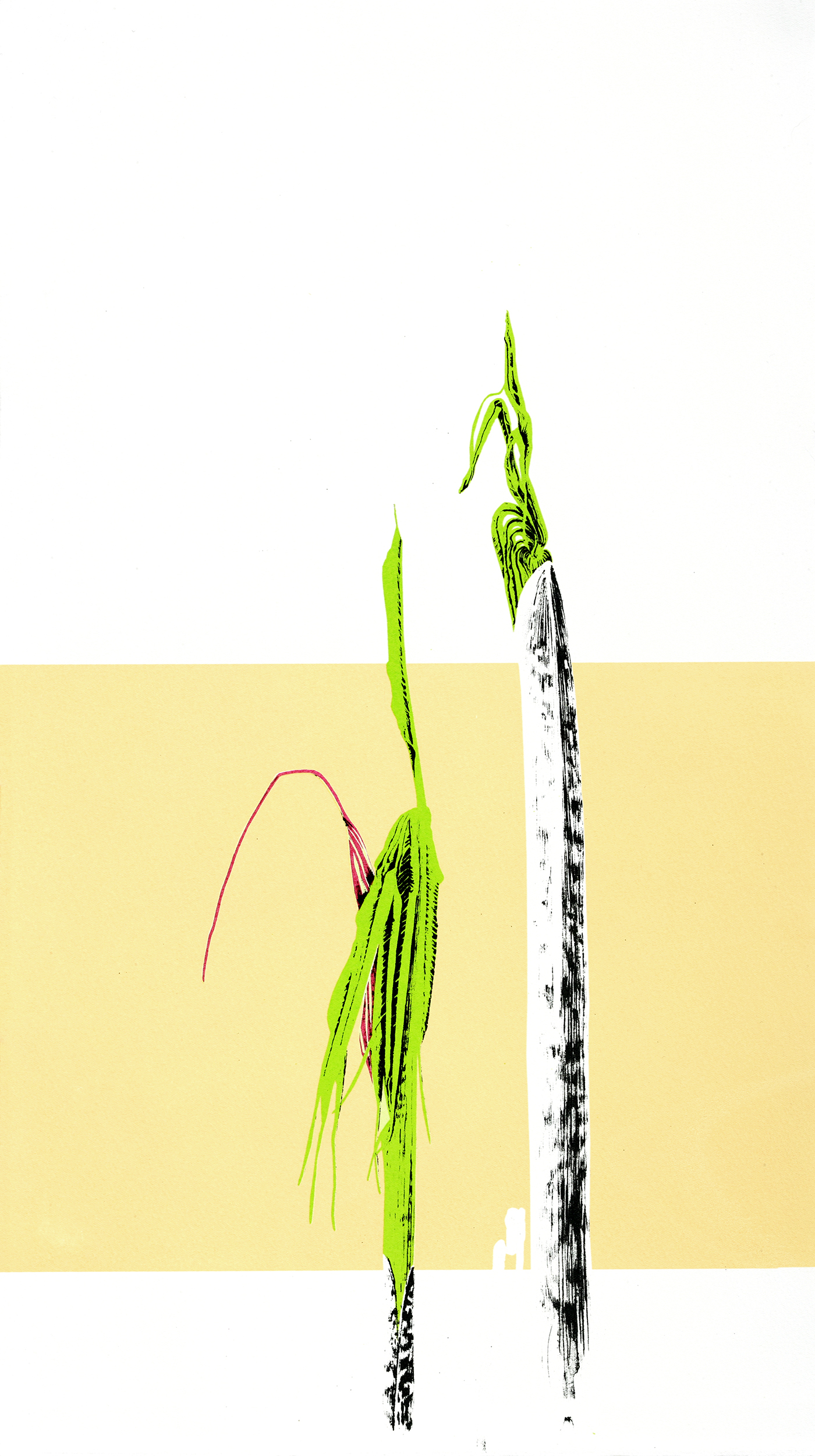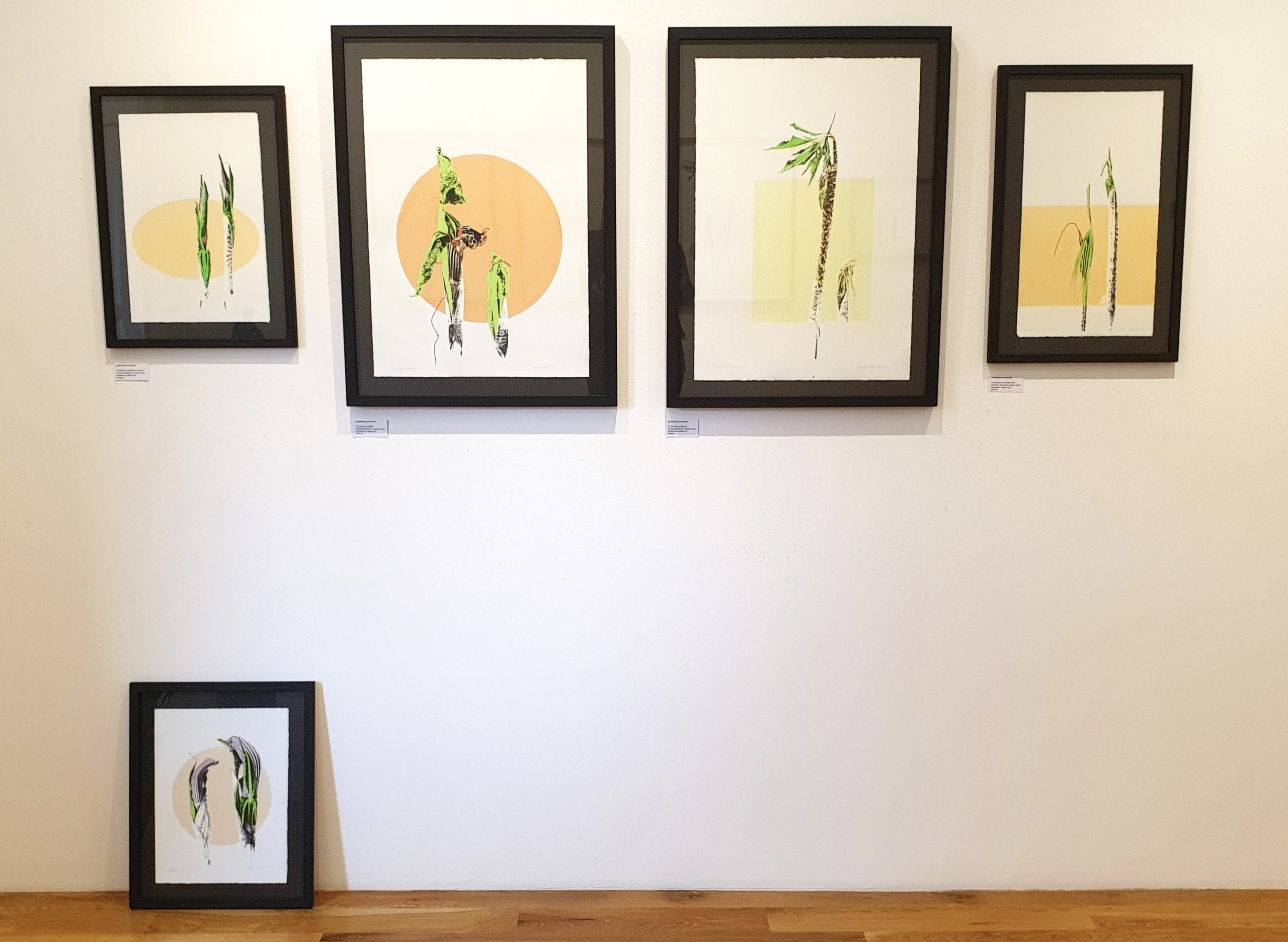original – Screen Print – Arisaema consanguineum
£440.00
these are the first in a new series of very limited signed editions, 5 of the edition are available unframed
I was intrigued to see if I could develop my Ink Shoots series with a screen printing process. I wanted to try a few things, the reintroduction of colour to the black and white image, and also the introduction of some kind of background element. I opted to work with geometric images in the background as I needed to find something simple enough to set of the detail in the plant images bit also something bold enough to stand strongly with them.
I used a simplified colour palate from my original colour matching for my water colour paintings and used the cataphyll* and stem colours in the geometric shapes, I was really wowed with the block colours and decided to really punch them up to compliment the almost black details. I have to say I loved making these, I really enjoyed the screen printing process, and I was also so please to be using the resources that I have worked with over a number of years to create new pieces of work with punch and vigour.
*the outer sheaves that protect the growing shoots
<< Click on the images for a ‘close up’
Description
edition of 6, 5 available unframed and unmounted
four colour screen print printed on Somerset satin white
the hand-made method of the printing process and the kinds of paper used means that the sizes vary – paper sizes are approximate and not all prints are centrally placed – these are provided as printed with torn and decal edges
This screen print is based on an earlier Japanese ink paste illustration of Arisaema consanguineum
Additional information
| Weight | 125 g |
|---|---|
| Dimensions | 28 × 50 cm |
Packaging
Where possible I try to reuse packaging, so your packaging may not look split new! Rejoice in this – we are helping the planet with our own tiny actions! (-_-)
Prints are packaged in a polypropylene bag (PP5) to keep them dry during transit, you can recycle this along with plastic bags at plastic bag recycling points. Smaller prints are wrapped in noissue tissue, part of the Eco-Alliance. Where possible, I reuse cardboard as protection for the front of a print and I use bubble wrap bags as an outer packaging for medium sized prints and, where possible, recycled cardboard on larger prints. Please reuse all packaging so that it extends the life on the materials.
Cards are wrapped in noissue tissue, part of the Eco-Alliance. Individual cards are packaged in either a polypropylene bag (PP5) or a biodegradable cellophane bag to keep them dry during transit. You can recycle the polypropylene along with plastic bags at plastic bag recycling points. The cellophane bags are 30mu Nativia ® film, which can be added to your green bin to be industrially composted*. I still have quite a stock of the polypropylene bags; once I have used these up, I will switch wholly to cellophane.
—
*Sourced from Transpack
Nativia ® film is made from corn or other sources such as sugar beet and potatoes among others, and conforms to the EN13432 standard, meaning it is biodegradable and compostable. It has also achieved the OK Biobased certificate from Vincotte. Nativia ® film breaks down quickly into carbon dioxide, water and biomass by microbial digestion in the right conditions.
The film is sourced from renewable sources and is food safe.
Nativia ® can be industrially composted and will disintegrate in six months to CO2, water and humus, a soil nutrient. It can also be mechanically and chemically recycled (not with other plastics because it has a lower melting temperature) and it can be incinerated. Nativia ® films do not biodegrade in landfill conditions.
Vegan friendly







